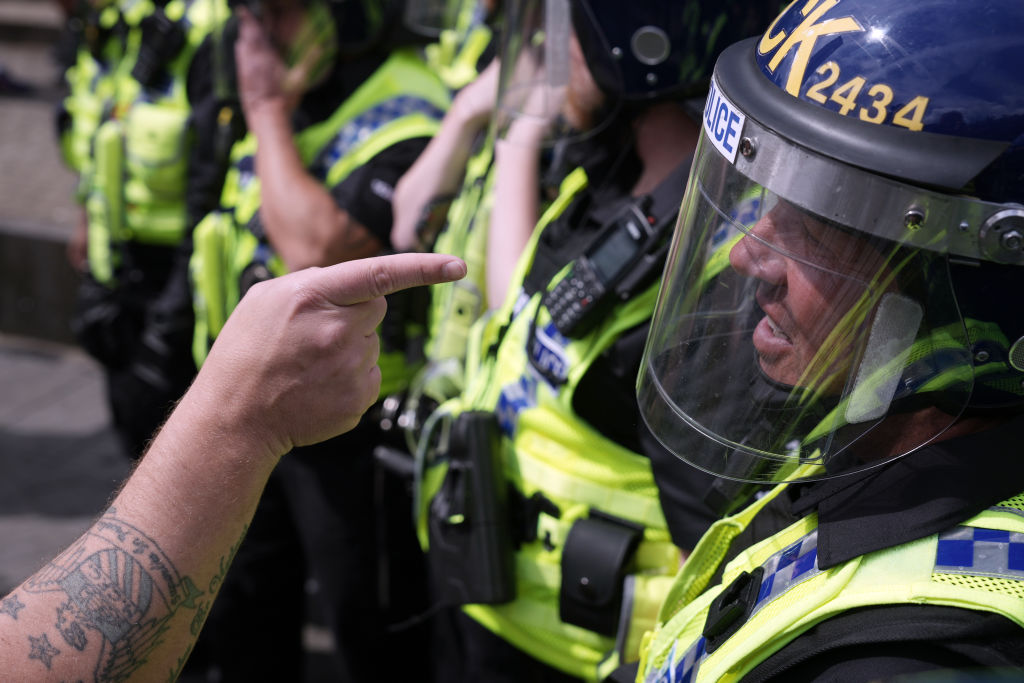We’re told these riots are about immigration, racism, angry Islam, elite blindness and identity politics – and, to a point, that’s all true. But the disorder in British cities is also about the internet – and online videos in particular. People just can’t stop sharing ‘riot porn’, whether it be savage beatings, vicious clashes between rioters and the police, or buildings and cars being set on fire. Violence, like sex, goes viral because it is so addictive to watch.
Unlike with pornography, however, there’s no stigma attached to the circulation of such footage, especially if the person on the receiving end of the brutality seems to be a villain. It’s schadenfreude on steroids. Last week, a clip of a skinhead getting a brick in the testicles after he’d charged at police officers garnered millions of views. So did a video of a police dog tearing into another man’s bottom.
The gratuitous dissemination of this ugly imagery is often dressed up as political commentary. Left-wing pundits post footage of thugs setting fire to a migrant hotel and blame the Tories for having ‘demonised’ foreigners. Right-wing pundits such as Tommy Robinson make barbed comments about ‘two-tier’ policing as they post a video of a frightening mob shouting: ‘Allahu Akbar!’
No doubt these posters believe what they say. But everybody knows that the nasty video, not the comment, is what really does well online. Social media companies worsen the spread of riot porn by algorithmically promoting footage to boost ‘engagement’. And TikTok, X/Twitter and Facebook do this because we, their consumers, can’t help ourselves.
That in turn creates a market for performative nihilism.









Comments
Join the debate for just £1 a month
Be part of the conversation with other Spectator readers by getting your first three months for £3.
UNLOCK ACCESS Just £1 a monthAlready a subscriber? Log in